Site Description: The site I selected for this project is the Olentangy Wetland Research Park, owned by Ohio State. The property can be found about a mile up the Olentangy trail from campus, and can be accessed directly from the trail. Throughout the year the trees and other vegetation often block the view of the wetland itself, so it is possible to miss if one is not actively looking. It consists of a main pond area, the focus of research from restoration ecology to meteorology. On one side there is a woody margin between the pond and the trail, and on the opposite is a walking trail with more prairie like vegetation, leading up to a viewing platform. A map of the site can be found here: Google Maps of WRP
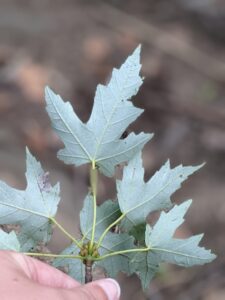
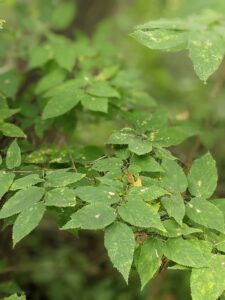

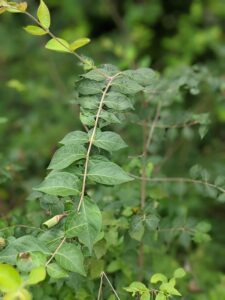
(Left to Right, 1) Common Name: Silver Maple
Scientific Name: Acer saccharinum
(2) Common Name: Hackberry
Scientific Name: Celtis occidentalis
(3) Common Name: Honeyvine
Scientific Name: Cynanchum laeve
-A fun fact is that the sap from the fruit (visible on the left hand side) of this plant is actually a skin irritant. Unrelated fun fact, I picked up one of these fruits last week to practice fruit ID 🙁
(4) Common Name: Honeysuckle
Scientific Name: Lonicera maackii
-Ugh grrr, invasive species alert!! This shrub was just about everywhere, likely choking out other diversity along the trail. There are several species of honeysuckle invading around the United States, though native honeysuckle can still be found and identified by those with a more trained eye than mine.
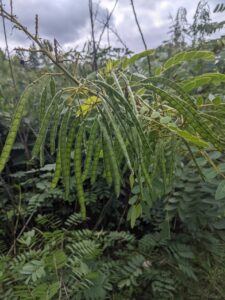
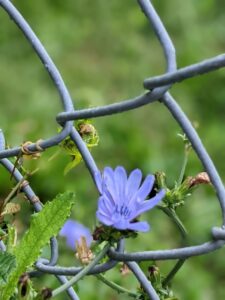
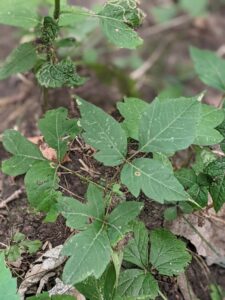

(Again, Left to Right, 5) Common Name: Wild Senna
Scientific Name: Senna hebecarpa
-This was one of the first plants to catch my eye upon arrival, as its legume fruits were overhanging the trail is great numbers. Quite the display, I can only imagine what the flowers would look like in person.
(6) Common Name: Common Chicory
Scientific Name: Cichorium intybus
-It is said the young leaves of this plant are bitter and can be eaten raw. One serving suggestion is in a salad, though use should be sparing lest the bitter compounds within be overpowering.
(7) Common Name: Poison Ivy
Scientific Name: Toxicodendron radicans
-My original fun fact was going to be that the compound causing the itchy reactions is called urushiol, but then I discovered that this plant actually falls within the CASHEW family. That is a cursed botany fact.
This plant can almost always be identified by its three distinct leaflets, though fruit identification is also possible (white drupes). Personally my ID technique is to assume it is present in woodland settings and just look at the ground and along trees until it is found.
(8) Common Name: White-tailed deer
Scientific Name: Odocoileus virginianus
-The highly elusive white tailed deer plant is actually found at this site. A family of juvenile plants joined me as I arrived at the site. Their advanced symbiosis with other herbaceous plants (AKA herbivory) was also evident along the edge of the wetland pond, as their browse line kept heights relatively low.
Other highlights:
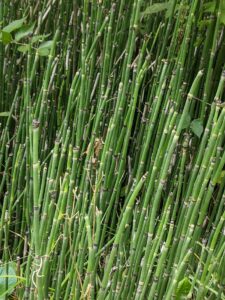
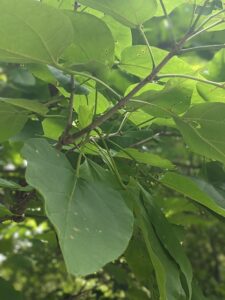
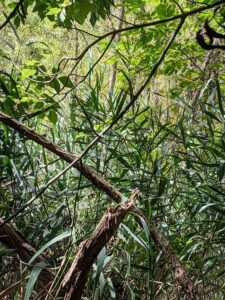
Some sort of horsetail along the trail-pond edge. Always a pleasure to see a catalpa around, not sure why but they make me happy. Likely Phragmites within the pond itself. Hopefully I will get a closer look relatively soon but I can definitely say it is a macrophyte.
